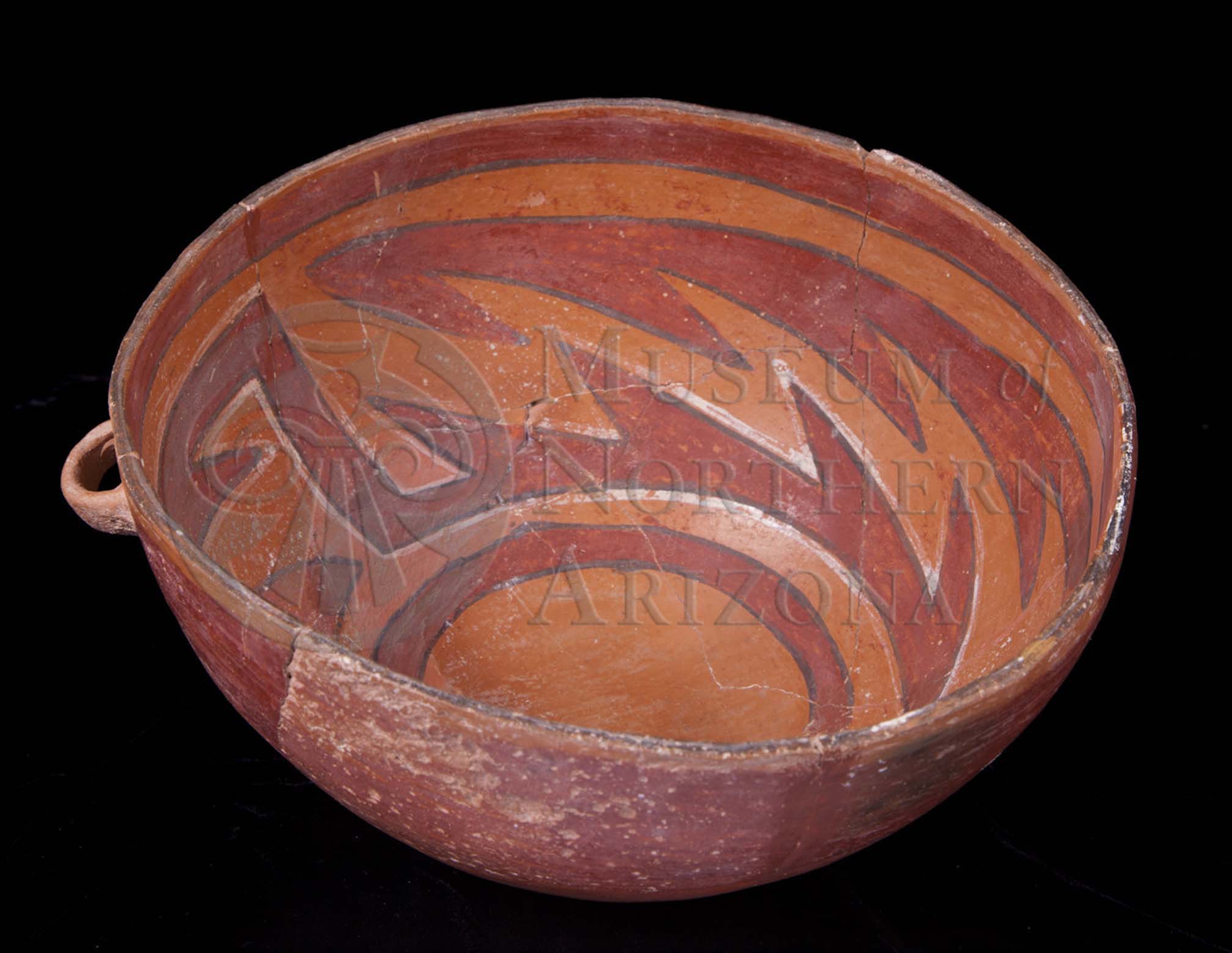
Kayenta Polychrome bowl from the Museum of Northern Arizona collections. Click the image to open the Kayenta Polychrome gallery.
Kayenta Polychrome is a type of Tsegi Orange Ware common in northeastern Arizona.
Archaeological Culture: Ancestral Puebloan
Date Range: Kayenta Heartland: A.D. 1250-1320 (Christenson 1994), Flagstaff Region: A.D. 1225-1290 (per Christian Downum, Northern Arizona University).
Construction: By coiling.
Firing: In an oxidizing atmosphere at end of firing period.
Core Color: Dark gray to light gray, brownish to pink.
Temper: About equal amounts of quartz sand and crushed sherd.
Surface Finish: Bowl surfaces sometimes bumpy, polished; scraping and polishing marks often visible, sometimes compacted.
Surface Color: Orange; color surface and core usually do not contrast except when core is gray.
Forms: Bowls.
Vessel Thickness: 3.6 to 7.3 mm; average 5.3 mm.
Decoration:
- Paint: Black, red, and white.
- Pigments: Black: manganese, white: kaolin, red: hematite.
- Design: Red design: interior- vertical, horizontal, diagonal stripes; often an encircling stripe below rim. Black design: narrow line outlining red area; horizontal and diagonal hachures in rectangular or triangular panels between red areas; wide staggered lines between series of narrow lines. White design: usually narrow white lines outlining black lines; sometimes white outlining red areas; exterior sometimes undecorated but usually one to three red stripes encircling vessel.
Comparisons: Tusayan Polychrome is similar but without the white line decoration.
Other Names: Polychrome Ware
Compiled from the following sources:
Christenson, Andrew. (1994) A Test of Mean Ceramic Dating Using Well-Dated Kayenta-Anasazi Sites. Kiva 59(3).
Colton, Harold S. (1956) Pottery Types of the Southwest. Museum of Northern Arizona Ceramic Series No. 3. Flagstaff, Arizona
Compiled by:
April Peters, Northern Arizona University Anthropology Laboratories.
